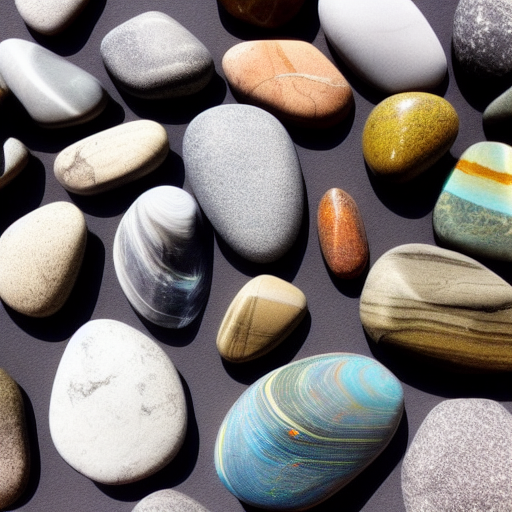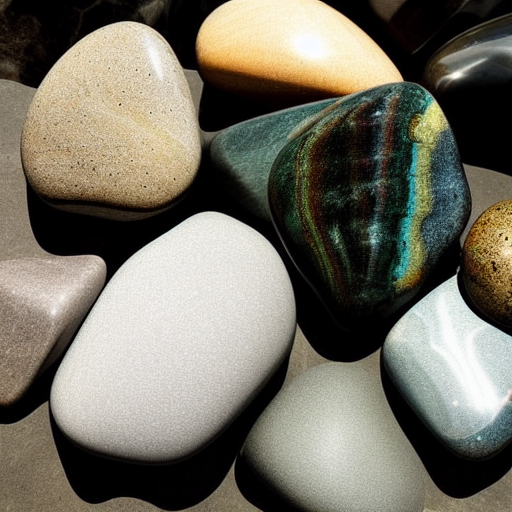
What Kind of Rock Polisher Should I Use?
If you're considering buying a rock polisher, the first question you should ask yourself is, "What kind of rock polisher should I use?" There are many advantages to both tumbling and rotary rock polishers. Read on to learn more about the two types of tumblers, including their capacity.
What Kind Is Best - A Rotary Or Vibratory Rock Polisher?
If you're looking for a rock polishing machine, you need to know which type to buy. The best option is to purchase a basic four-stage rock polishing kit, which you can find on Amazon. The size of the barrel will depend on the amount of rock you plan to polish. In general, a three-pound barrel can hold about two pounds of rock, while a four-pound barrel can hold up to three pounds of rock and about one pound of polishing grit.
The type of grit used will determine the type of polish you'll get. Most people use borax or shaved layers of ivory bar soap. You may also want to use plastic pellets. These materials will give you a shinier finish. Make sure you read the manual and choose the right grit for the job. Also, keep extra grit on hand in case you'll need to tumble small loads of rocks.
If you're a beginner, a rotary rock tumbler is a good choice. Although a rotary tumbler will take longer to polish rocks, it will give you better results. Both types use different sizes of grit to produce different shapes. The rotary rock tumbler will create rounded shapes, while a vibratory rock tumbler will produce more angular shapes.
Rotary Rock Tumbler advantages
A rotary rock polisher has a few advantages. It is inexpensive, easy to use, and doesn't use much electricity. It is also quieter than a vibratory tumbler. Tumblers can polish more delicate materials, but they require more active management. You'll have to inspect the rocks more often.
Choosing the right tumbler for the job is important. Choose a model with large enough tumblers to accommodate the rocks you're polishing. If you're working with softer rocks, a four or three-pound tumbler might be insufficient. If you're working with harder rocks, you might want a six or twelve-pound tumbler. In order to get the best results, fill the tumbler to about 65-75% with rocks. Otherwise, you'll end up with too much grit surrounding the rock.
Vibratory Rock Tumbler advantages
A vibratory rock polisher gives the finished result of a finely rounded rock, which is a great feature for beginners. It is also more quiet than a rotary rock polisher and requires less supervision. However, it can require extra grit and polishing materials, and some tumblers have leaky barrels, which can be a problem. A vibratory polisher can take a couple of weeks to complete a batch.
A vibratory rock tumbler requires less electricity and time compared to a rotary one. In addition, it can polish more delicate materials. However, vibratory rock tumblers require more maintenance, such as twice-daily checks. This is an excellent option for rockhounds who polish a lot of rocks.
Tumbler Capacity
There are many factors to consider before choosing a rock tumbler, including how much grit you need for your task. Using the correct amount of grit is essential to the quality of the polishing process, and you should never use more grit than you need. A good rule of thumb is one or two tablespoons of grit per pound of rock. The rock tumbler barrel should be half to two-thirds full.
If you're polishing larger rocks, you may want to consider getting a bigger tumbler. A larger tumbler will help polish larger rocks and consume grit more efficiently. A large tumbler will also help beat up harder rocks because it can tumble longer. This is a major benefit, especially if you're polishing several rocks at once.
Another thing to consider when buying a rock tumbler is the capacity. You need to think about how many pounds of rock you'll be polishing at a time. The three-pound tumbler is great for small rocks, while a six-pound tumbler will be great for large rocks.
What rocks are you going to tumble?
The first thing to consider is the type of rocks you are going to tumble. The hardest rock to tumble is quartz, which is the most common mineral found in Earth's crust. Quartz is white or translucent in color, and is perfect for tumbling. You can purchase tumblers that allow you to tumble rocks at any speed, making the process both fun and safe for the whole family.

Tumbling rocks will give you the best results, but you must first choose the proper kind for your project. The best rocks to tumble are smooth and free of jagged edges. But don't limit yourself to these two types. You can also tumble other types of rocks. Here is a list of some of the most popular and commonly available types:
Another rock type to tumble is agate, a semiprecious gemstone that's usually red or orange in color. This stone is a variety of microcrystalline quartz. It's also translucent and comes in a variety of hues, making it an excellent choice for beginners.
What is your rock polisher budget?
If you're interested in rock polishing but don't have a lot of money, you may want to buy a rock tumbler. These machines give rocks a better shine than hand polishing and can polish dozens of rocks at once. These tumblers are available in a variety of styles and grits. You can choose a coarse (80 grit), medium (200 grit), or fine (400 grit) grind.
The barrels of tumble polishers can be messy and difficult to clean. The abrasive can get stuck in the barrel and scratch the stone. If you polish a rock with this abrasive in the barrel, you'll end up with ugly stones. A good rock tumbler will have a rubber barrel that won't scratch your stones.
The average rock tumbler costs between $100 and $200. This is a good price range for the first-time user, but a high-end tumbler costs at least a few hundred dollars. Some rock tumblers in this price range can hold up to 12 pounds and have metal barrels made from durable materials. This means you won't need to replace the barrel for years to come. In addition, higher-end tumblers often come with multiple barrels, which allows you to polish rocks at different grit levels.
Rock Tumbler Speed is important
If you want a smooth surface for your gemstones, you should look into rock tumblers with a higher speed. While the average speed of rock tumblers is around 90 RPM, higher speeds allow you to round stones more quickly and change the polishing grit more often. The speed of your rock tumbler is also an important factor in the amount of time you can use it before it overheats. Most tumblers have a runtime of 60 to 90 minutes before they start overheating.
Rock tumblers come in a variety of speeds, so you can choose the one that is most comfortable for you. If you're new to the process, you might want to start with a beginner's rock tumbler, like the AliKids Rock Tumbler Kit. It comes with a durable motor and a stainless steel lid to keep your rocks secure. It also features three speeds so you can choose the one that suits your needs best.
Another thing to consider is the hardness of your rocks. Some rocks can take up to four weeks to fully process in a rock tumbler. Agate, for example, is known to consume stones of similar hardness.
Rock tumbling resources
If you are considering starting a rock polishing hobby, you should consider the hardness of your rocks. The Mohs scale measures rock hardness according to its resistance to scratching. Generally, the lower the number, the softer the rock. For tumbling purposes, rocks with a Mohs hardness of seven or less are suitable. Talc, for example, can be scratched with a fingernail, but rocks with Mohs numbers of eight or higher require steel nails or masonry drill bits.
When selecting the right rock polisher, you should take into consideration how you plan to use it. There are different types of tumblers, each with different advantages and disadvantages. If you have many rocks, you can select one that is designed for polishing a certain rock type.
The barrel of a rock tumbler is usually made of thick rubber, which minimizes noise during operation. The barrel is often angled to reach the nooks and crannies of rocks and rock mix. There are various sizes and shapes of tumbler barrels. A rock tumbler that fits perfectly in a three-pound barrel is the best option for beginners.